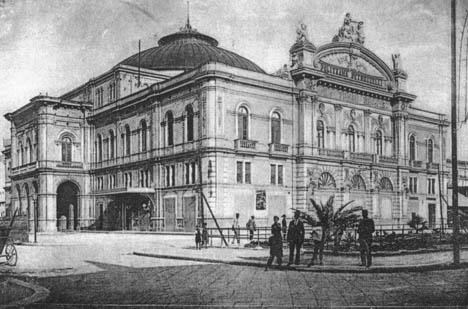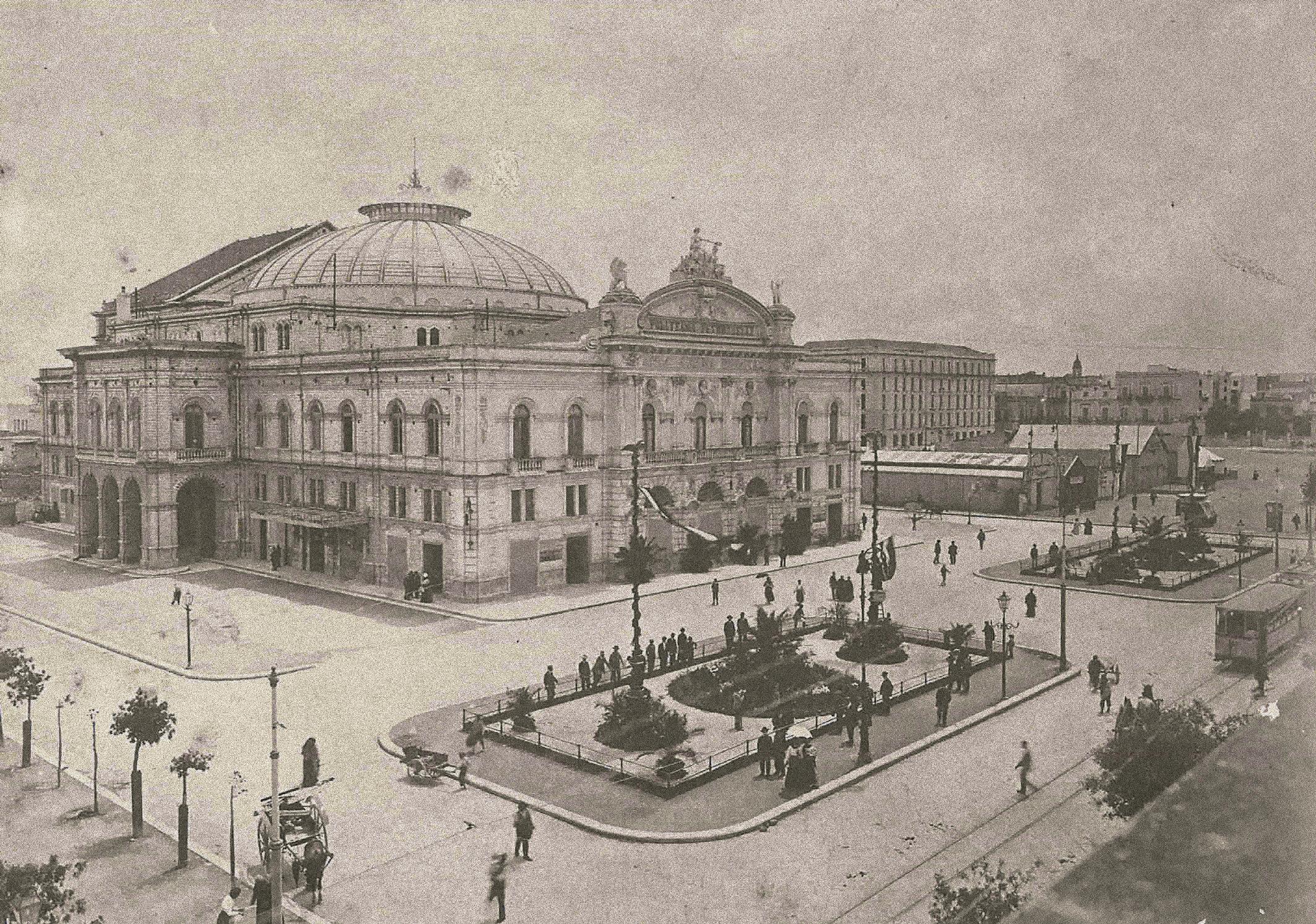In the late 19th century, in the wake of other major Italian cities, Bari already had its own municipal public theatre, the Piccinni, which was inaugurated in 1854.
However, its limited capacity (about a thousand seats) led to much discontent among the cityfolk who rebelled against a policy of overpriced tickets and the lack of seats, calling for a theatre “for and belonging to the people”.
This turbulent climate was fuelled by the success, in 1890, of Pietro Mascagni’s Cavalleria Rusticana, who had burst onto the Italian music scene when he won the Sonzogno Competition back in 1883.
Bari was very much looking forward to hearing the maestro’s latest work, not least because he was Apulian by adoption.
Indeed, Mascagni had composed his masterpiece in Cerignola, where he had lived for many years.
Unfortunately, the Piccinni was not big enough to accommodate this particular opera: the need for a grand theatre was now even more pressing.
The City Council had already addressed this issue with two resolutions during 1877, by which it undertook to award a prize of 12,000 lire and the land required, free of charge, to any firm declaring its willingness to build a theatre thereon, by the deadlines and in the manner specified therein.
Brothers Onofrio and Antonio Petruzzelli, traders and shipbuilders from Trieste, presented a project curated by their brother-in-law from Bari, the engineer Angelo Cicciomessere (who later changed his surname to Messeni, by Royal Decree).
The project was approved in 1895 (and then revised in 1898), but work on the theatre was repeatedly delayed.
All doubts were definitively laid to rest following a popular uprising caused by the increase in the duty on flour: the city authorities decided to put in place a huge programme of public works, giving employment to large numbers of people and thus alleviating social tensions.
Work on the Petruzzelli began on 23 May 1898, and lasted for over four years later, until on 14 February 1903, the Theatre opened with a performance of Giacomo Meyerbeer’s Les Huguenots.


The Petruzzelli’s outstanding capacity distinguished it from other Italian theatres: though originally there were 2,192 seats, this figure has fallen today to 1,482 as a result of safety regulations as well as due to the variety of performances staged here.
The Petruzzelli stage saw many great classics of the opera repertoire (headed by Verdi and Puccini) and a series of new performances in line with trends on the international art scene.
Some of the highlights included Filippo Marchetti’s grand-opéra Ruy Blas, a genre that due to the grandeur of the performances and the complexity of the stage machine was not included in most opera seasons, the Fra’ Diavolo opéra-comique by Daniel Auber, Antônio Carlos Gomes’s opera ballo Guarany and Romualdo Marenco’s ballet Ballo Excelsior.
The Petruzzelli stage was trod by such unforgettable artists as the tenors Mario del Monaco, Alfredo Kraus, Beniamino Gigli and Tito Schipa, the soprano Renata Tebaldi and the baritone Renato Bruson.
During the Fascist era, political control extended even into the city’s artistic landscape, enabling only those composers whose works were in line with the ideas of the regime to have their works performed.
This was followed by the onset of war and the subsequent fall of Fascism.
When Bari became the headquarters of the allied forces, the Petruzzelli was occupied by the Anglo-American army, which turned it into a centre of entertainment for their troops, as illustrated in the film Polvere di Stelle (Stardust).
Starring Alberto Sordi and Monica Vitti, this movie describes the atmosphere of a Petruzzelli which staged various forms of entertainment, in the melancholy years of the post-War period.
In 1973, the Petruzzelli was officially recognised as a “Theatre of tradition”.
During those years, several operatic events of international importance were to be held on the Apulian scene.
In Bari, the director Luca Ronconi put on Niccolò Piccinni’s Iphigenia en Tauride which he then took to the Théâtre du Châtelet in Paris and director Pier Luigi Pizzi staged Bellini’s I Puritani, in the first version that the composer wrote for the Spanish opera singer Maria Malibran.
From 1981 onwards, the Theatre put on some spectacular and unforgettable performances by the greatest ballet companies (led by such names as Maurice Béjart and Roland Petit).
Many of the world’s most famous and popular singers performed at the Petruzzelli, including
Luciano Pavarotti, Plácido Domingo, José Carreras, Katia Ricciarelli, Raina Kabaivanska and Cecilia Gasdia.
The Petruzzelli’s music seasons were among the finest anywhere in Italy.
The spotlights had just turned off on Bellini’s Norma when, on the night of the 27th of October 1991, a fire destroyed the theatre, a dagger in the heart of the city’s artistic life, leaving the citizens in dismay at such an unimaginable tragedy.
In 2009, with the reopening of Petruzzelli, completely rebuilt exactly as it was in its basic form, but with state-of-the-art facilities, both in terms of security and technology, the Foundation’s artistic and cultural activities have rediscovered their natural stage.




